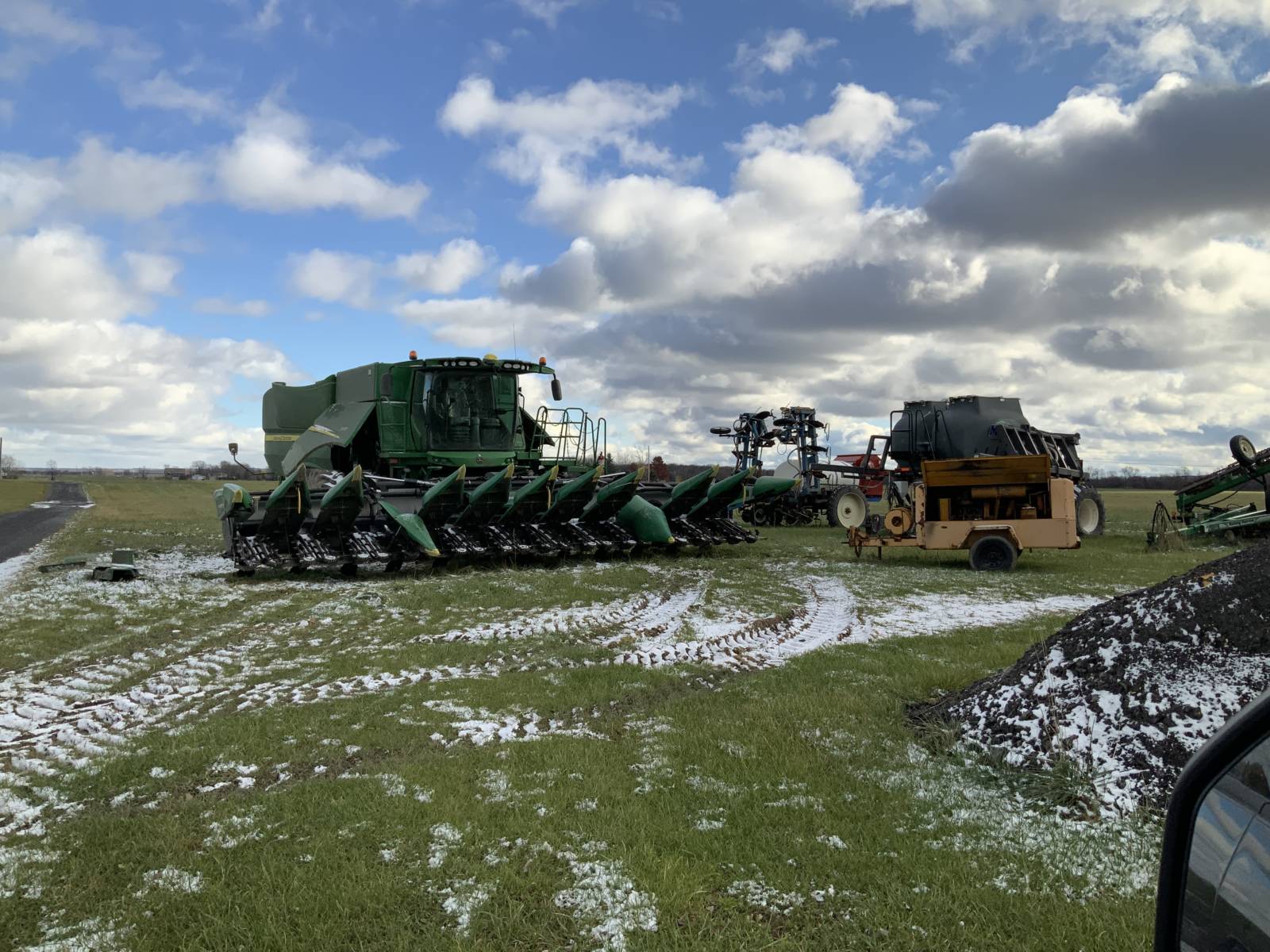 It has been a very wet fall in our area of the U.S. northeast. And, the cooler temperatures and shorter days that come with this time of year cause our fields to dry more slowly. But despite consistent rains and wet conditions that limit our time in the fields, we have finished the 2021 harvest a few weeks earlier than average. We usually finish picking corn by the first or second week of December, but this year, we finished November 20.
It has been a very wet fall in our area of the U.S. northeast. And, the cooler temperatures and shorter days that come with this time of year cause our fields to dry more slowly. But despite consistent rains and wet conditions that limit our time in the fields, we have finished the 2021 harvest a few weeks earlier than average. We usually finish picking corn by the first or second week of December, but this year, we finished November 20.
We finished cutting soybeans in late October, with an average yield of nearly 4.2 metric tons/hectare, or 62 bushels per acre. That is the second-best crop we’ve ever raised, so we are very happy with that. We even planted one field of double-crop soybeans following our winter wheat, and it yielded well for a second crop.
The wheat planted as a cover crop continues to grow well, and we may end up allowing all 100 hectares, or 250 acres, grow to maturity and harvest it next summer.
 We started harvesting corn shortly after we finished soybeans. While yields have been well above average, they weren’t quite as high as we expected based on comments from other farmers in the area.
We started harvesting corn shortly after we finished soybeans. While yields have been well above average, they weren’t quite as high as we expected based on comments from other farmers in the area.
Unfortunately, much of our corn is infected with vomitoxin. That’s a mycotoxin caused by a fungus that can infect corn during the tasseling and silking stage. This is the fourth time in 6 years that it has been a problem in our corn. This creates a crop quality challenge. If vomitoxin levels are too high, we may have trouble selling it this winter.
We have talked with many agronomists, but we haven’t come up with a solution for this problem. Many other farmers in our region are seeing similar vomitoxin levels in their corn, and suggested management practices like tillage and fungicides haven’t been effective in treating it.
 Usually, we prepare fields for next year during harvest. We typically buy our inputs for the next season by the end of December. Then, we start marketing our crops in January.
Usually, we prepare fields for next year during harvest. We typically buy our inputs for the next season by the end of December. Then, we start marketing our crops in January.
This year, a variety of factors may cause us to change our usual plans.
While we were harvesting soybeans, my son Rodman was able to strip-till more than 200 hectares, or about 500 acres, of those soybean fields. He disturbed a small strip of soil and put fertilizer in that slot, with the intention of planting corn into those strips next spring.
But, the combination of consistently high vomitoxin levels and very high input costs may cause us to decide to switch from planting corn to planting more soybeans next season. We may even decide to plant 100% of our fields to soybeans. Soybean prices are strong right now, so we may start selling this year’s crop right away.
We have already paid for the corn and soybean seed we originally planned to plant next season, but the suppliers we work with allow us to be flexible if needed. We may switch much of the corn seed to soybean seed. And we may have the opportunity to experiment with several ideas that would be new to our farm.
For example, we hope to secure a contract to grow about 365 hectares, or 900 acres, of high oleic soybeans. Because of high fertilizer costs, we will probably minimize the amount of fertilizer we use for any of the soybeans. We may try planting soybeans into the strips in the fields Rodman strip-tilled this fall. If planting corn continues to be challenging, we may decide to grow more wheat in the future, as well. We will look at our options throughout the winter, so that we can make decisions about what we plant before next spring.
In planning for next year, we will take this season into account. We used the strip-till machine we built for the first time as we prepared fields last spring. After a dry winter, spring rains delayed planting, but the crop got off to a great start. The soybeans thrived during the summer, despite a dry summer. In September, we planted cover crops into our maturing soybeans. Despite the late start in planting, we started soybean harvest ahead of schedule. Now, with our corn harvested, the 2021 growing season is complete.
I have enjoyed sharing our progress this year. Although next year is uncertain, my family is proud to continue to improve our farm to produce sustainable, high-quality soybeans.
This field update is funded by the soybean checkoff. To share or republish part or all of this Ground Work 2021 article, please link to the original article and credit www.USSOY.org.

